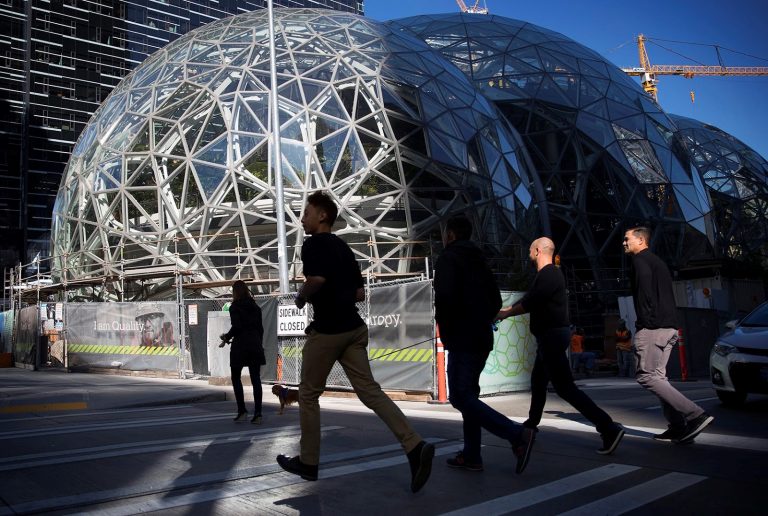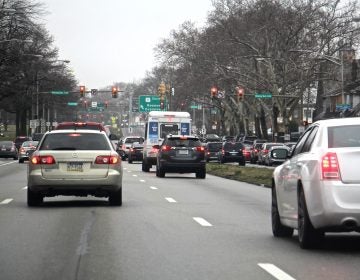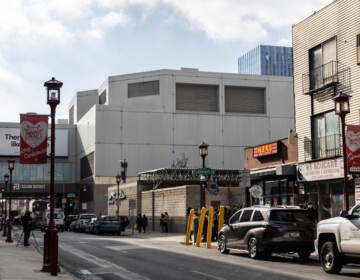Amazon-New York HQ2 breakup has lessons for Philadelphia

Amazon’s New York City HQ2 plans unraveled in spectacular fashion last week—a fitting end for a spectacle of a location selection process.
It is tempting to see the deal’s dissolution as an outlier — a “only in New York” kind of moment.
But while New York City is unique in many ways, it generally relies on the same economic development formula as most cities: tout your competitive advantages, offer financial and/or regulatory incentives, and project impressive job creation and economic impact numbers.
The details typically come together in the proverbial back room, to be presented to the public as a done deal. The impact numbers that invariably justify the tax break on the table come out of a black box.
This deal-making doesn’t come cheap. Philadelphia’s losing bid cost an estimated half a million dollars.
Until now, this approach has reigned supreme.
Just how and why Amazon’s New York deal fell apart indicate that the rules of the economic development game may finally be changing, in part thanks to the huge spotlight Amazon turned on business as usual. Philadelphia should take note of three key trends underlying the online titan’s walk away from the Big Apple.
Process over Projections
Economic impact estimates can raise eyebrows — they always seem to be huge no matter the size of the investment, and they typically rely on models that are abstruse or proprietary.
For many New Yorkers, $3 billion in tax breaks was breathtaking, and the promised returns, $27 billion, sounded too good to be true.
That these particular projections were commissioned after the announcement of the Long Island City headquarter split only reinforced a sense that the numbers simply served a foregone conclusion.
And the fact that Amazon and government deal makers didn’t even bother getting their stories straight further irked the public — New York State’s commissioned numbers were based on a projection in 2033 of 40,000 new jobs, when Amazon only committed to 25,000.
The projections also included revenue benefits extending 10 years beyond the initial 15-year build-out phase. There a lot of unknowns about what the world – let alone state and city tax rates and resource needs – will look like in 25 years. If you calculate revenue using a shorter time period, the cost remains the same but the benefit numbers shrink.
Projection skepticism emboldens the opposition if fears of losing out on jobs are outweighed by concerns that a big payoff won’t really materialize.
Amazon skipped New York City’s typical development process, which requires community input.
The company resisted calls for public discussion of its needs and plans.
Local politicians and advocates wanted negotiations and the math behind the projections of economics to take the spotlight, not just the ribbon cutting.
In Philadelphia, advocates made successful legal arguments for the release of sealed bid documents.
Preserving the city’s competitive edge is the rationale behind the secret sausage making.
But increasingly, tax payers want to be in the know when it comes to significant public expenditures.
Our local public land disposition system has come under fire recently for a lack of transparency with much smaller sums at stake.
Philadelphia should remember there are risks in taking projections at face value and circumventing public processes, just as there are risks associated with letting a truly good deal go.
Cautionary Tales of West Coast Tech
It used to be that dealmakers conjured dystopian visions of empty factories and abandoned downtowns to quell opposition
But now the skyhigh rents and homogenized neighborhoods of San Francisco and Seattle evoke the same fear instincts as those images of shattered local economies.
Equitable development has long been a community development touchstone, but the idea is quickly gathering currency in more traditional economic development circles as well.
New York City’s subway system — an economic lifeblood and a great equalizer — is in disrepair. The same state and city leaders who can’t seem to come together to fix this critical service managed to agree on massive incentives to one of the world’s biggest companies.
More people and their elected leaders want public dollars invested in core services and infrastructure that serve everyone. They want investment in the trains and schools they use, rather then money spent chasing elusive future returns.
In Philadelphia, we have toxic school buildings, short-staffed library branches, an outstanding pension liability and an aging housing stock. There is a rapidly diminishing tolerance for policies and practices that don’t prioritize these issues over big proceeds that always seem to recede into the future.
Wages not jobs
The promise of jobs often underpins deals like New York’s agreement with Amazon.
But as housing costs far outpace wage growth for many Americans, the question shifts from how many jobs to jobs for whom?
Amazon estimated an average salary of $168,000 for its 25,000 workers; the median income in New York City is about $60,000.
Many residents saw that these jobs weren’t for people like them – and worried that more high salary jobs would just mean more upward pressure on housing costs. Meanwhile, some share of the direct jobs and many of the indirect jobs projected in the service sector would pay less than the city median. SNAP and other federal, state and local subsidies would end up supplementing these lower-wage jobs.
A promise of higher wages and better benefits for lower education or skill-level employees could have mad a stronger case for people on the fence about the deal.
Philadelphia, even with our significantly lower housing costs, has a large number of working residents who simply do not earn enough for decent shelter at prices affordable to them. Increased wages for current workers rather than more jobs is quickly becoming the new holy grail of economic development.
If dealmakers continue to eschew community benefits agreements and other tools that address the issues that matter to voters, they should factor in the chance that a deal could fail like it did in New York.

PlanPhilly is one of 22 news organizations producing Broke in Philly, a collaborative reporting project on solutions to poverty and the city’s push towards economic justice. Follow us at @BrokeInPhilly.

Emily Dowdall is Policy Director for the Policy Solutions group at Reinvestment Fund, a community development financial institution based in Philadelphia and operating nationally. She conducts and applies research to build stronger, more equitable communities. Previously, she conducted research for the Pew Charitable Trusts and was a policy advisor in New York City’s Office of the Mayor. She has a Master of City Planning degree from the University of Pennsylvania, and B.A. in Metropolitan Studies from New York University, and is a native Philadelphian.
Follow Emily at @EmilySDowdall and Reinvestment Fund at @reinvestfund
WHYY is your source for fact-based, in-depth journalism and information. As a nonprofit organization, we rely on financial support from readers like you. Please give today.







